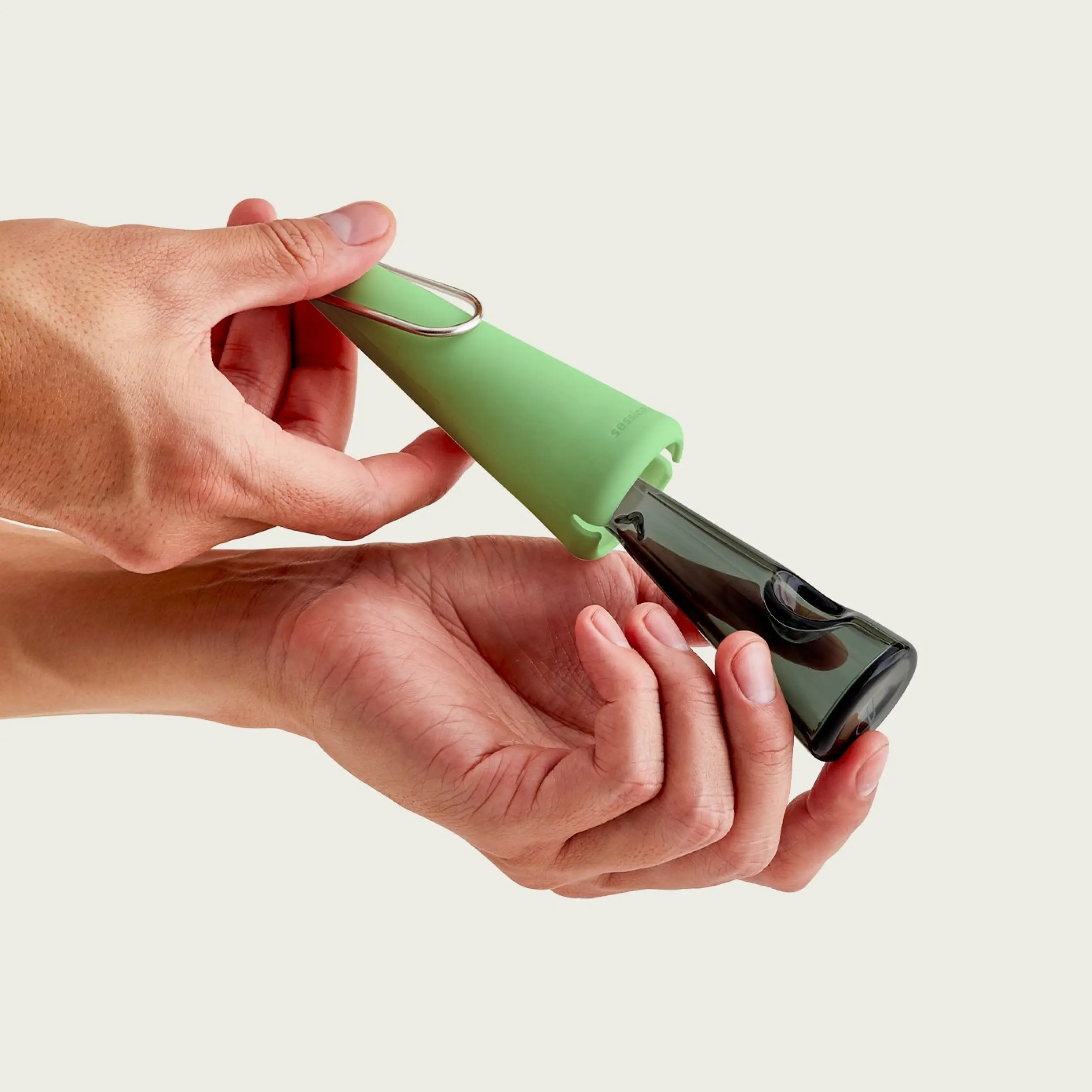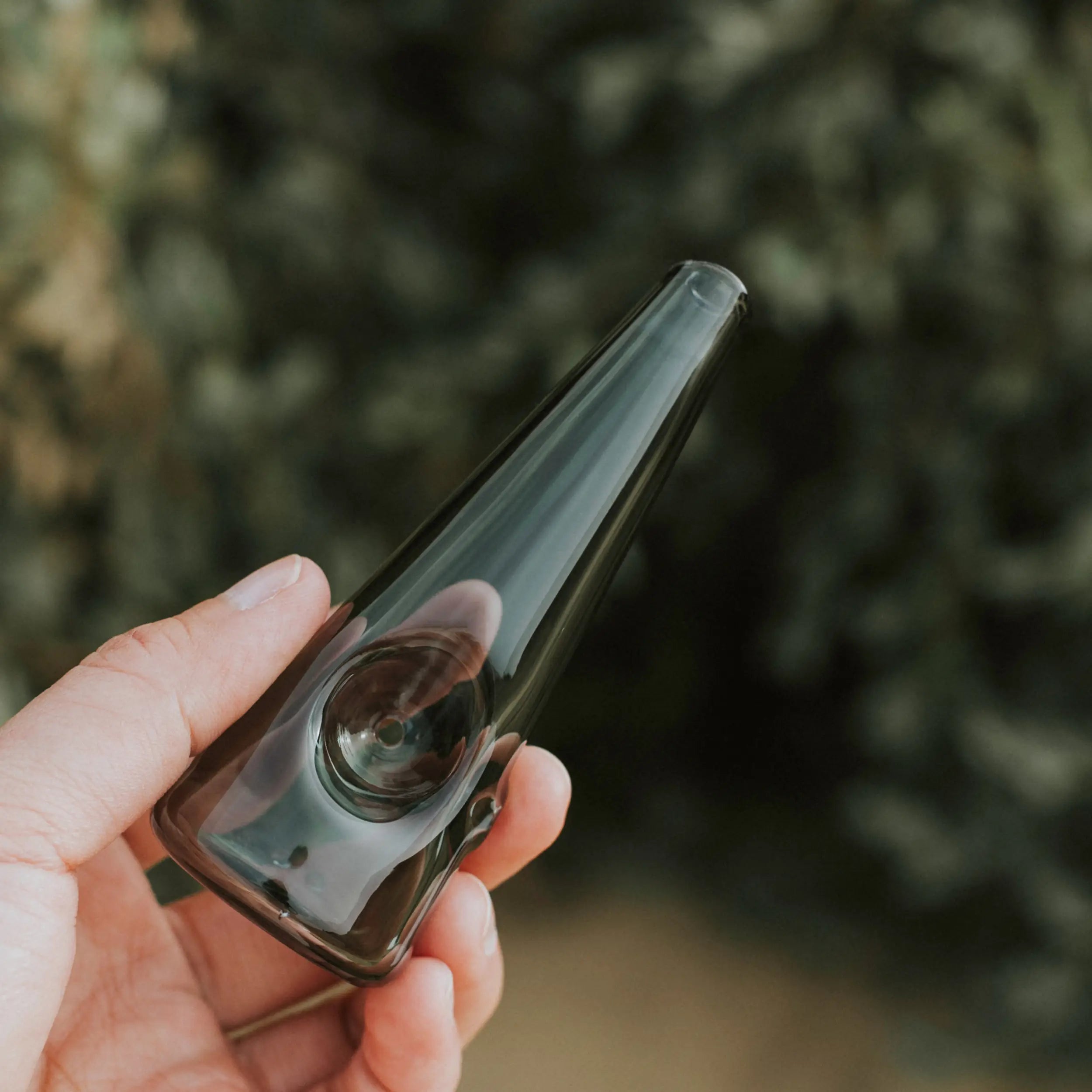First, an anecdote. Growing up around music and musicians, I was exposed to various musical forms and mediums. I used to steal my older brother’s albums or collect enough money to buy concert tickets, where I would often discover new music. Musical knowledge was a bit like currency at that time. Musical tastes became a certain code that established a connection with other people who knew the same genres, labels, histories, etc. This went on for years. And yet, I distinctly recall the first time I smoked cannabis and listened to a record. This moved me beyond the appreciation of music and into the experience of music. The notes, lyrics, and repeated patterns all transcended their familiarity with something I’d heard, and thought was catchy or meaningful in a superficial way and delved into an altogether new understanding of the mechanics of the song and the structure as a whole. In other words, it is a whole new experience and clarity within the combination of cannabis and music. This is hardly a new idea, either. Cannabis and music have an obviously long-standing history with one another. But why does this occur? What about being high produces a new experiential phenomenon within the music we enjoy?
Firstly, it should be understood that even without the introduction of cannabis, the music itself may induce temporary physiological responses: an increase in heart rate, a need to keep in time with the rhythm (toe tapping, head bobbing), a euphoric state or responses from certain areas of our brain. Dr. Jörg Fachner’s paper titled “An Ethno-Methodological Approach to Cannabis and MusicPerception, with EEG Brain Mapping in a Naturalistic Setting” references a study conducted in 2001 by Anne J. Blood and Robert J. Zatorre:
Listening to our favorite melody, we register changes not only in the activity of the autonomic nerve system—in a heartbeat, muscle tension, skin resistance, and depth of breathing—but also in the blood flow in brain structures that, according to recent findings, are also involved in processing emotional stimuli. The activation pattern (blood flow) of brain regions influenced by music … show a surprising similarity to activity patterns induced by drugs, with a primarily euphoric effect like, e.g., cocaine; this suggests that the perception of one’s favorite music interacts directly with structures associated with emotions (Blood and Zatorre 2001).

If music already creates physiological responses that mimic certain drugs, then cannabis would seemingly be the catalyst that pushes these responses even further. Fachner details brief histories of drugs and music, which, while typically associated with jazz or psychedelic rock, reveal a vast mapping of usage from classical civilization and the Medieval era to the 20th century and modern era. The history is deep and vast, but this does little to explain exactly how this combination interacts the way it does or can enhance our auditory perceptions.
Fachner details the results of his 2006 study of introducing music and cannabis to subjects. The results are categorized into the following:
- Parietal and Temporal EEG Changes
- Acoustics and “High” Attention
- Time and intensity
- Rhythm
- Enhancement and experience
While the first sections contain data and language I am unequipped to explain to the casual blog reader, the others detail the slowness or distinctions between time forms.
In the experience of time as kairos, time structures are connected to personal time. Time as chronosis is connected to processes concerned with defined geographical and societal agreements. Kairological time allows a variety of time perceptions and refers to the right time to do something, to decide or act directly in the here and now. A talk can seem like hours, even if it lasts only 20 minutes, or it can be exciting and feel like only a few minutes. Specific moments, situations, and interests must interfere with a personal karyological set of emotions, habits, and attitudes. We need specific settings and surroundings that make us experience an event as an acceleration (a “rush”) or a slowing of time. Cannabis influences this personal set of time frames.
From these distinctions of time structures, we may feel some autonomous yet wholly connected experience when listening to music while smoking. The way that THC interacts with our neurological receptors seems to distort our notions of past and present in such a way that we become enveloped or more distinctly aware of the present time. In this state, a five-minute song can feel much longer than five minutes as each note or beat urgently demands to be heard clearly, or a solo that lasts two minutes can go by speedily in the context of the rest of the song. An hour-long orchestral piece may appear as an entire narrative played out over a much longer or shorter time. Even without music, this would stand to be noticeable when high.
If these structures of time are made acutely aware to us by cannabis, then the feeling of rhythm and pace is equally affected. The rhythmic background of a musical piece is often regarded as the heartbeat of the song that grounds the rest of the instruments, vocals, etc. Rhythm in music is so strong that even when other players deviate from the song's structure, they can find their way back to the rest of the ensemble through the rhythm. One of the most obvious examples is Jazz, in which improvisation and rhythm are highly defined. The paper discusses previous studies that concluded that, after smoking cannabis, the musician’s sense of rhythm was “perceived more distinctly, and especially casual users had an obvious improvement in the rhythm task.” These referenced studies also note that the perception of tone and rhythm in the cannabis user resulted in an improvement.

Most of Aldrich’s subjects—two of them musicians—said that they had the impression of perceiving tones and rhythm better after a cannabis-altered state … Jazz musicians of the 1920s and 1930s had to play contemporary music all night long for dancing, so they invented an embellishment of song structures to maintain interest; and cannabis seemed to provide the right inspiration to create a larger vision for doing this.
These enhanced perceptions benefit the artists as much as the listener. In smoking cannabis, the heightened awareness of time perception of tone and rhythm produces an altogether new experience in how we listen to music, understand sound, and create music. We become aware of the notes and rhythms and the spaces between the notes – the pauses and the intonations. It is no wonder why music and cannabis would match so well together. Each offers what the other desires: clarity, heightened attention to rhythm, and a profound sense of different time frames. Although I reference only one study, and while more studies are available, the relationship between cannabis and music still seems to exist as a conventional understanding rather than a more thoroughly explored subject. Yet, because it’s conventional knowledge, we know it makes a harmonious partnership. I hope that however you choose to pair these two, understanding the “how and why” in our auditory perceptions makes it all the more profound and enjoyable.
Fachner, J. (2006), An Ethno-Methodological Approach to Cannabis and Music Perception, with EEG Brain Mapping in a Naturalistic Setting. Anthropology of Consciousness, 17: 78-103. https://doi.org/10.1525/ac.2006.17.2.78









![[in] session - stories in the sounds: music and cannabis blog post](http://sessiongoods.com/cdn/shop/articles/music_cannabis.jpg?v=1696537286&width=1152)




![[in] session blog escape to goulding house and watching the leaves change](http://sessiongoods.com/cdn/shop/articles/escape_goulding_summer_house_1f0cdfcd-bc35-4cab-a079-41a0287e3b10.jpg?crop=center&height=1145&v=1762960209&width=1145)
![[in] session blog — Inspiring interviews, articles about cannabis & design](http://sessiongoods.com/cdn/shop/files/session-goods-homepage-insession-blog-mobile_63644ba1-0223-434b-b77e-5f4a30d7375f.webp?v=1692127377&width=600)